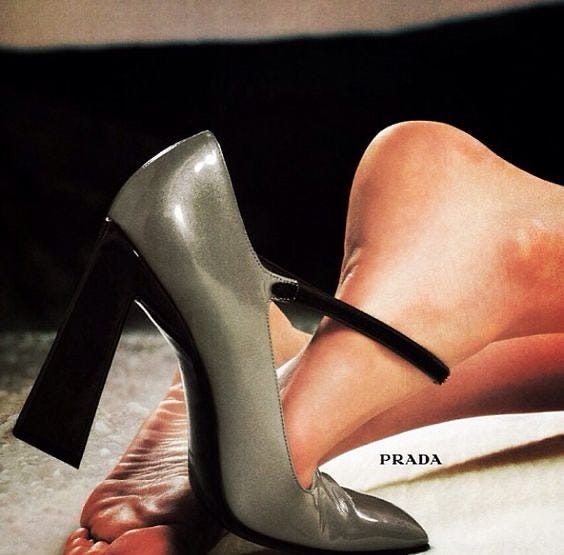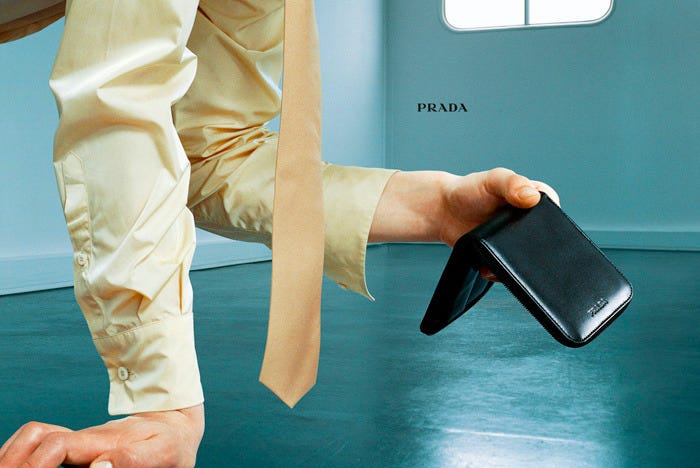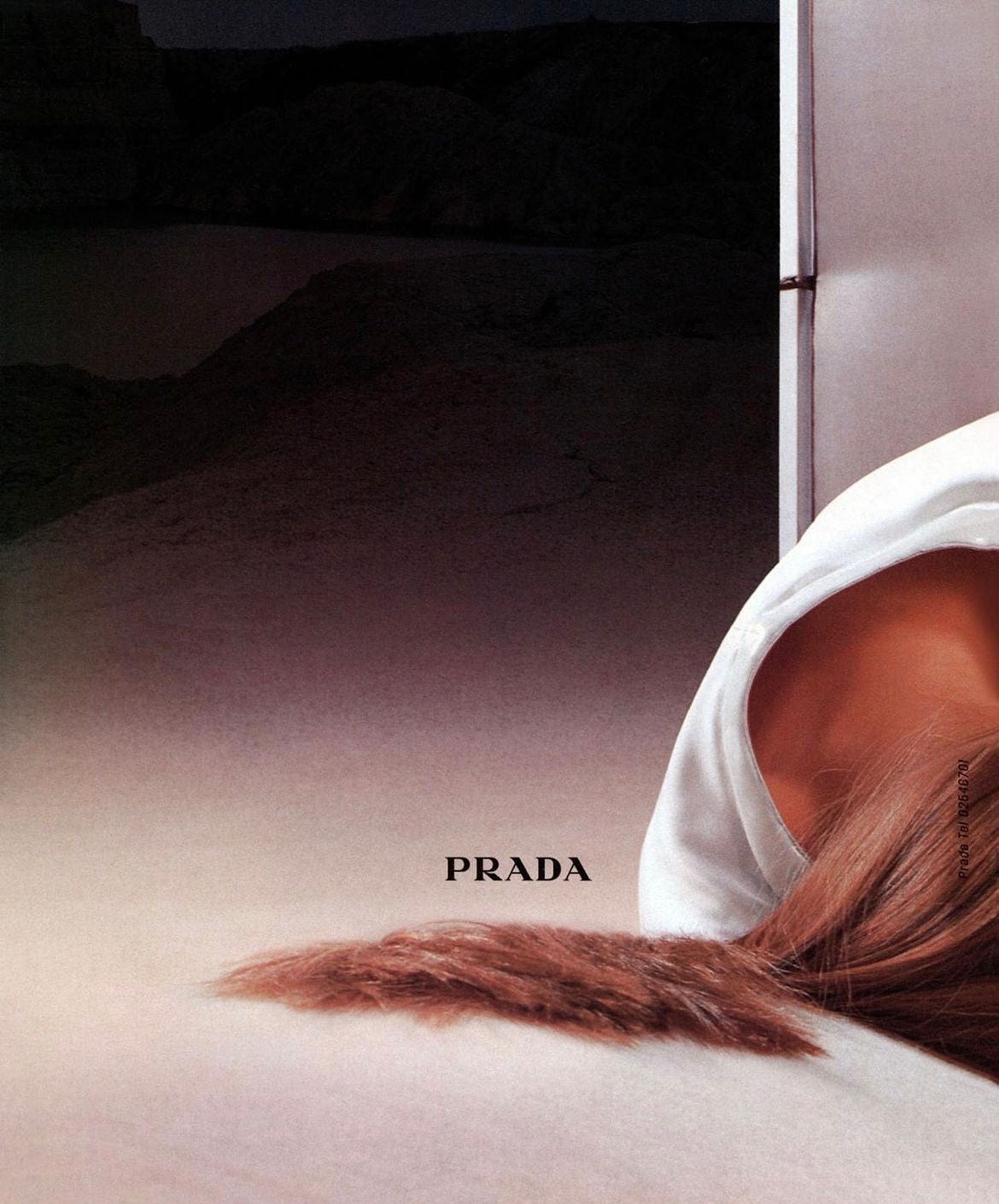The third season of HBO’s Industry begins with a hard-on. A full upright member belonging to Charles Hanani, whose dalliance with a yacht staffer – because yes, all rich people fuck their staff on yachts – is interrupted when Yasmin Kara-Hanani, his daughter and one of the show’s protagonists, unknowingly walks into her room to discover them – because yes, all rich people have their own bedrooms on their yachts. She is just as shocked as we are. The friends I was watching with shrieked and then gleefully rewound the scene. With excitement levels set to ‘HIGH,’ there are only two directions where the plot can go and we follow the trajectory that Charles Hanani points to for the remainder of the episode: up.
For long-time viewers of Industry, this is nothing new. The show feeds on a continuous build, a Stairmaster of tension. Centered around the frenetic London headquarters of Pierpoint, a fictional investment firm that feels familiar, Industry transplants the propulsive anxiety of the trading floor into the living rooms of their audience. Co-showrunner Mickey Down described the third season, now occupying the prestigious HBO Sunday night spot (think Game of Thrones and Succession), as “coke and boats.” So far, a couple of episodes in, the show has delivered on this thesis. If Succession touted the whispers of quiet luxury, Industry jitters and tweaks with an indulgent opulence.
When I first began watching Industry in 2020, I didn’t have many friends who watched it other than those who worked in finance and a few folks from business school, not yet soured by Introduction to Corporate Finance. I even remember hearing from friends at major banks that they didn’t enjoy the show. Why leave the terror of work to experience more terror? But the tension of the show is designed to induce stress. At the time of its premiere, during the global pandemic, the sensory overload of unlikeable characters, the foreign finance-speak often delivered via inscrutable British accents, and its heady club music, all in an office setting, felt triggering when we were sheltering in place. To me, the timing of the series premiere only bolstered its manic yet precise aesthetic. Vaguely PTSD, some might say.
But the feeling Industry inspires is one of anxiety. The DSM-5 associates anxiety with the three or more of the following symptoms:
Restlessness or feeling keyed up or on edge
Being easily fatigued
Difficulty concentrating or mind going blank
Irritability
Muscle tension
Sleep disturbance (difficulty falling or staying asleep, or restless unsatisfying sleep)
The cocktail above is what it feels like to watch Industry and likely what it’s like to work at Pierpoint. But with these intensified feelings of dread, why am I addicted to it?
Jessica Schrader, a psychiatrist reports that this thrill-seeking behaviour is a real thing:
“I've seen that many people are addicted to the adrenaline rush of anxiety, known as "the fight or flight response" and don't know how to diffuse it. An example of this is obsessively watching the news about natural disasters, trauma, economic stress, and violence, then not being able to turn bad news off.”
Industry is watchable because the creators understand how to balance the dread with moments of ecstasy, market crashes against orgasms, death coupled with drug highs. It isn’t all doom and gloom. Sometimes it’s a character stumbling upon her father’s hard-on but what’s consistent it's the thrill. The irritation – stemming from the immoral decisions of the show’s dizzying ensemble, their blitzing banter – and the feeling of being keyed up, sometimes literally as we watch the characters do cocaine bumps from keys in bathrooms, are all hallmarks of anxiety. The diagnosis might as well be a roadmap to how an episode of Industry is made.
A key element of the craft of Industry relates directly to an anxiety symptom from the DSM-5: the feeling restless or on-edge. There is so much movement in the series that you can never settle or get your bearings. A single episode is equipped with shifting power dynamics. In S3E2, Yasmin oscillates from serving Lumi CEO and founder Henry Muck to obtaining a special power over him. The constant maneuvering of loyalties also contributes to the feeling of restlessness. In the same episode, we witness Harper shift her allegiance from Anna Gearing to Petra Koenig within the same company.
However, what I personally find the most unnerving while watching Industry is how characters fade in and out across seasons, contributing to the feeling of restlessness. In season one we are introduced to Daria Greenock and Greg Greyson, two vice presidents of the Pierpoint team that Harper, the show lead played by the all-star Myha’la, works with. As we acclimate to the pace of the show, we watch as Harper, a first year analyst at the time, calibrates her surroundings with defining interactions across the two VPs. By the end of the season both Daria1 and Greg abruptly ‘exit’ the show due to their own miscalculations. In season two, we meet two of my favourite characters of the season – Jesse Bloom and Celeste Pacquet. Harper and Yasmin find themselves (trapped?) under their wings respectively for similar reasons: Bloom and Pacquet's proximity power and their uncanny ability to navigate the political world of finance. Both of them dole out the appropriate amount of praise to keep the two leads sustained, chomping away at what they believe is admiration and kept disciplined by the calculated restraint of psychological safety. By the end of the season, when they are done with extracting what they need from Harper and Yasmin, they too make their exits, only calcifying the wounds of abandonment in each of the show’s leads and the audience. Now, I am introduced to the character Sweetpea Golightly – my prediction for this season’s audience favourite – and am worried I will be abandoned again. My therapist wouldn’t classify me as an anxiously attached person but my therapist doesn’t watch Industry. And yet, I can’t look away, faithfully tuning in on command as each episode drops and re-watching it later in the week to make sure I’ve caught everything. With Industry, this anxious attachment is thrilling.
The visual and sonic aesthetic is a part of the Industry’s defining hallmarks. There is so much combustion woven into the fabric of the show. Layers of dialogue, as main characters shout at each other over Bloomberg terminals, are then lathered up with even more dialogue as supporting characters (re: Rishi 🩵) garble over each other with their own spirited conversations.
The music of the show, led by composer Nathan Micay (who randomly was in the same dorm as me at university back in Ontario), creates its own apparatus. It’s a ravey wind-chime series of chord progressions that feels inappropriate for the setting of an investment bank and yet, logged against scenes of people behaving inappropriately, it works. The sound is Safdie-esque, where the films Good Time and Uncut Gems were scored by experimental producer Oneohtrix Point Never to deliver a similar anxious feel. To label the music of the show purely ‘synths’ would be reductive as it’s closer to a charm, the sound a video game character emits when it's disarmed and lingers in blinking purgatory. Imagine that but hyped up by a million as if A.G. made it. There’s a lofty spectral quality to it that reminds me of the fragmented cords of Discovery (music project of Rostam) by way of stained glass. All of this contributes to the show’s intricately berserk combustion. Or ‘irritability,’ if we are mapping back to the DSM-5.
The above is rammed up against an almost indecipherable string of finance jargon. Short. Layup. Meme stock. Bearish. RICC. The average TV viewer can’t tell you the intricacies of a hedge-fund manager’s job and yet it’s all effective in curating the finishes of the show. We know enough to discern. In Netflix's Selling Sunset, the show’s protagonists break the fourth wall to explain what ‘escrow’ is. The showrunners of Industry are not as preoccupied with hand holding. Industry intends to confuse. To disarm. To move fast. The difficulty of concentration you experience – as inscrutable dialogue jumps from character to character – is another symptom of anxiety according to the DSM-5.
We’ve been conditioned to seek these quippy, fast-paced shortcuts to excitement because of… you guessed it: our phones. The rapid response of a text. How we can quickly get validation from engagement on a social media post. How we can tell where my friends are on instant because of Find My Friends. Go too long without it, and you feel anxious but live solely within it, and your anxiety consumes you.
Kyle Chayka, staff writer at the New Yorker and Dirt co-founder, writes that Industry is prestige television made for the TikTok era, drawing comparisons to the throbbing score of Luca Guadagnino’s Challengers and Charli xcx’s BRAT:
Industry might be seen as extreme: too fast, too loud, too confusing. But if the past few months have taught us anything, it’s that reality itself swerves too quickly to be coherent. The culture of our moment is responding to this feeling of acceleration by embracing it.
Submitting to the pace and aesthetic of Industry, despite how anxious it makes me feel, is thrilling. Whether it leads to a bull market crash or continues to swell with excitement like Charles Hanani, I’m eager to tune in each Sunday. I encourage you to watch, DSM-5 list in hand, and see how quickly you cross everything off.
LOOSEY is a bi-weekly newsletter about culture, technology, and the way we live. If this is something you like, consider subscribing and sharing. Let’s be friends on Instagram.
Daria returns for a brief moment in Season 2.










my favorite part about the industry's wiring is that no character is ever safe. eirk has been at pierpoint for a long time? could be fired any second. harper is a top performer? gone. yasmin having a trust fund? no more money. all the people around robert dying. no warmups for any of these twists whatsoever
i love how you paired the visuals of the prada campaign with the piece, it really complements the writing